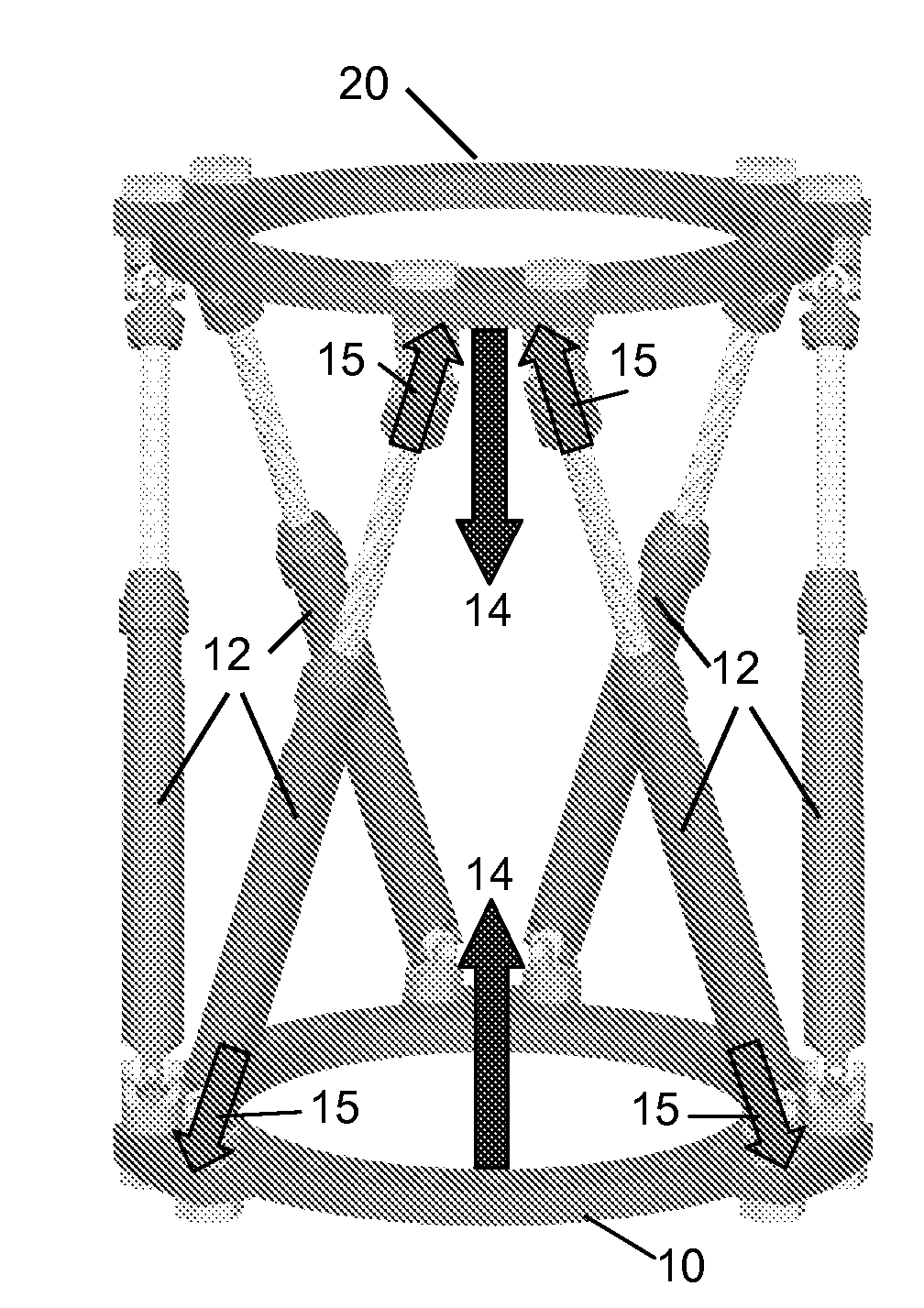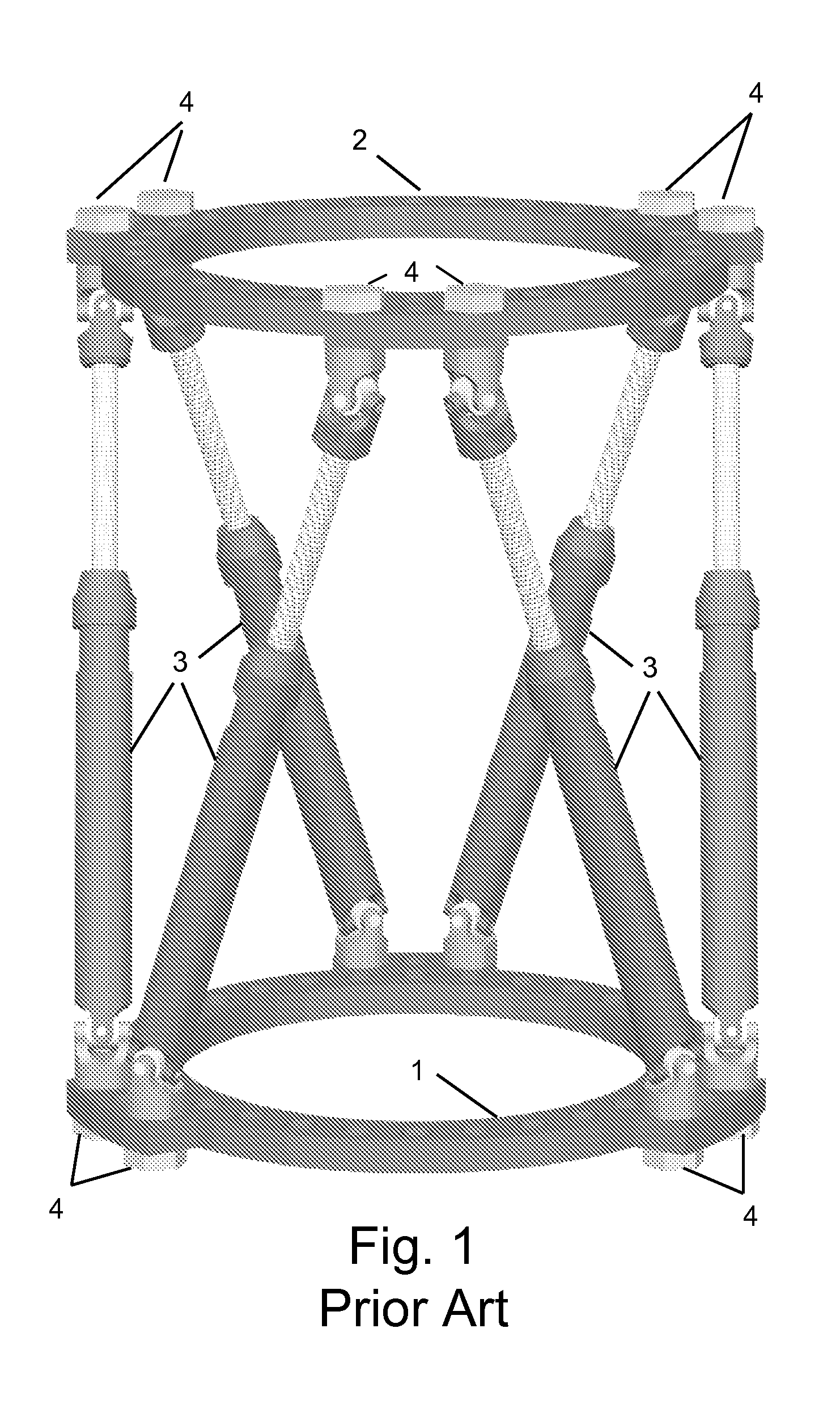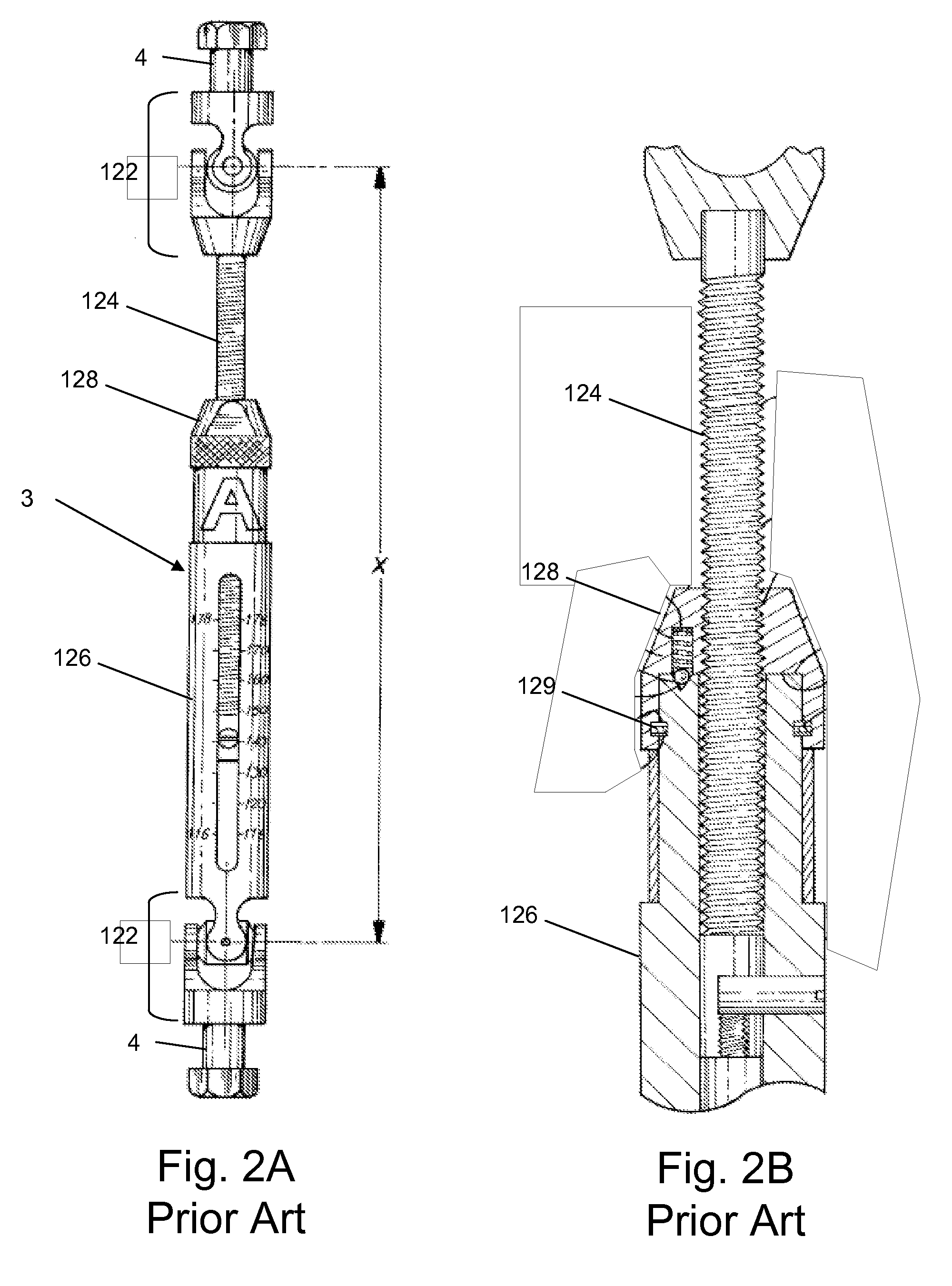Orthopedic fixation device with zero backlash and adjustable compliance, and process for adjusting same
a fixation device and zero backlash technology, applied in invalid friendly devices, joint implants, medical science, etc., can solve the problems of inability of the structure to precisely and rigidly maintain the relative position limit the position accuracy and precision of the base members, and reduce the movement of the skeletal elements. , to achieve the effect of increasing the adjustable compliance of the fixator, increasing compliance, and reducing the motion of the skeletal elements
- Summary
- Abstract
- Description
- Claims
- Application Information
AI Technical Summary
Benefits of technology
Problems solved by technology
Method used
Image
Examples
Embodiment Construction
[0043]Detailed descriptions of the preferred embodiment are provided herein. It is to be understood, however, that the present invention may be embodied in various forms. Therefore, specific details disclosed herein are not to be interpreted as limiting, but rather as a basis for the claims and as a representative basis for teaching one skilled in the art to employ the present invention in virtually any appropriately detailed system, structure or manner. In the various views of the drawings, like reference characters designate like or similar parts.
[0044]The improved orthopedic fixator device of the present invention benefits from two concepts that can be applied individually or in conjunction. The first concept focuses on the pre-loading of a fixator device to reduce backlash and is illustrated generally in connection with FIGS. 1-6. The second concept focuses on a benefit obtained through adjustable compliance and is illustrated generally in connection with FIGS. 7A-8B. The combin...
PUM
 Login to View More
Login to View More Abstract
Description
Claims
Application Information
 Login to View More
Login to View More - R&D
- Intellectual Property
- Life Sciences
- Materials
- Tech Scout
- Unparalleled Data Quality
- Higher Quality Content
- 60% Fewer Hallucinations
Browse by: Latest US Patents, China's latest patents, Technical Efficacy Thesaurus, Application Domain, Technology Topic, Popular Technical Reports.
© 2025 PatSnap. All rights reserved.Legal|Privacy policy|Modern Slavery Act Transparency Statement|Sitemap|About US| Contact US: help@patsnap.com



